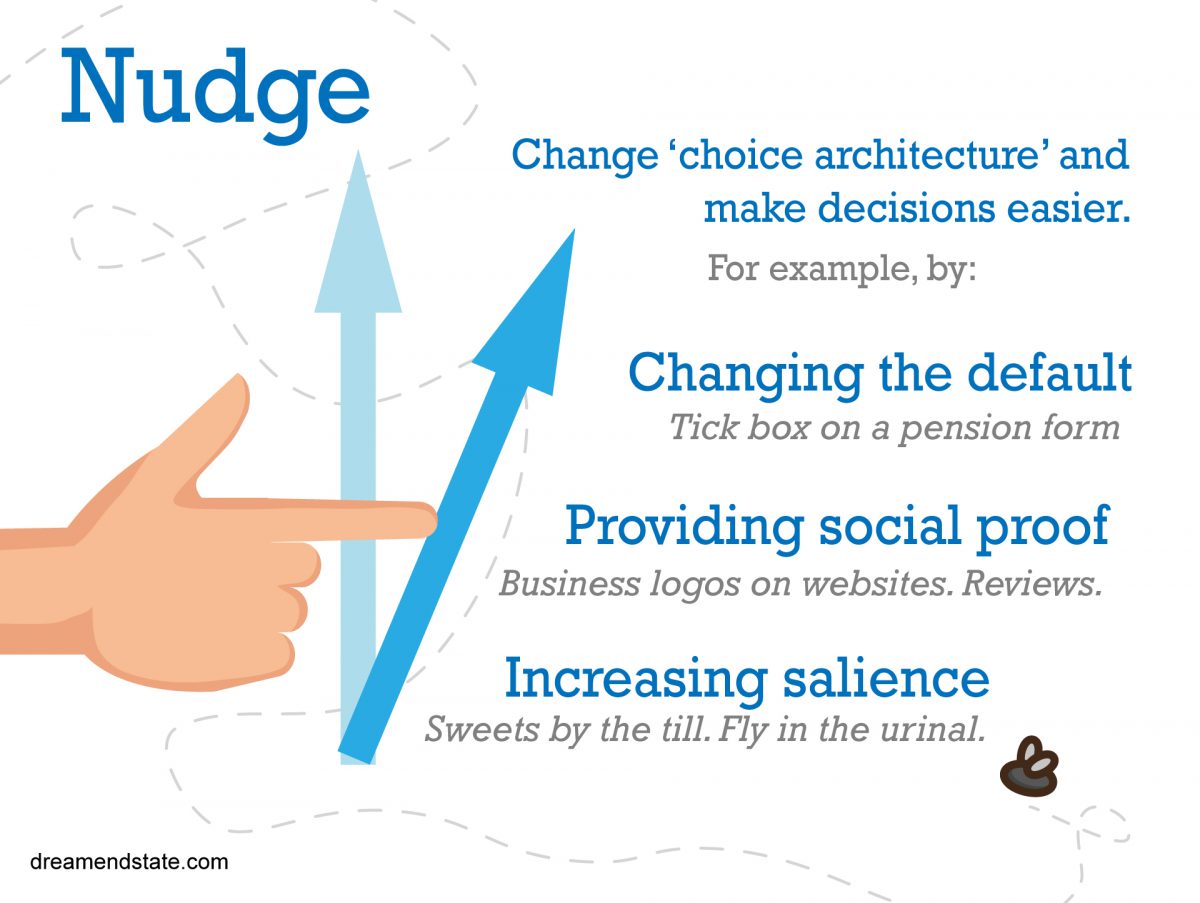This is how you can change people’s behaviour without anyone realising.
In a perfect economy, people faced with a decision would choose the best, most rational option for them, every time. What’s more, the more choices you give to people, the better their decisions will be.
We all know the world doesn’t work like that. If it did, I would buy an apple when I’m hungry instead of half price crisps at the checkout. Therefore, the solution is to ban crisps so everyone makes better choices. Right?
Nudge theory rejects both of these extremes. Firstly, it says that the way choices are presented affects the decisions people make. Secondly, the best way of helping people make good decisions is not by restricting their choices, but changing how they are presented — nudging them.
To understand how to present choices, we need to understand how people make decisions. Richard Thaler and Cass Sunstein, the creators of nudge theory, gave a few examples of what sways us when faced with complex decisions:
- Loss aversion
As prospect theory shows us, people hate losses more than they like gains. Telling someone they’ll lose hundreds of pounds if they don’t switch their car insurance is more effective than saying they’ll gain hundreds of pounds if they do. - Status quo bias
People tend to stick with default options, because that’s easier and it’s assumed the default is the best. When workplace pensions changed from ‘opt-in’ to ‘opt-out’, millions more people started saving for retirement. The choices are exactly the same, but the decisions have changed. - Following the herd
If you can convince someone that everyone else is doing something, they’re more likely to do it. It’s why adverts claiming a product is the most popular in the country are so effective. And why voter-turnout campaigners should stop loudly complaining that lots of people don’t vote.
Advertisers and the food industry have known how to influence people for decades — that’s why the supermarket puts half price crisps at the checkout instead of apples. How can nudging be used for good? Thaler and Sunstein call for nudges in situations that are “most likely to help and least likely to inflict harm.”
People will need nudges for decisions that are difficult and rare, for which they do not get prompt feedback, and when they have trouble translating aspects of the situation into terms that they can easily understand.
Richard Thaler & Cass Sunstein, Nudge, p. 72
Watch out for
Nudge theory became influential for policymakers around the world, especially in the administrations of Barack Obama (for which Sunstein worked) and David Cameron. So unsurprisingly, it’s controversial.
One of the major criticisms is that nudges may be used as a cheap and ineffective substitute for policies that are more ambitious or costly. The UK government was criticized for relying on nudges and behavioral science at the start of the Covid outbreak while other countries were locking down. Sunstein himself said in 2014 that “nudges are not a sufficient approach to some of our most serious problems”.
With thanks to Ivan Edwards who wrote most of this post. Thanks Ivan!
Resources
O’Brien, Hetty (May 2019), Cass Sunstein and the rise and fall of nudge theory, New Statesman
Thaler, Richard H. & Sunstein, Cass R. (2008), Nudge: Improving Decisions About Health, Wealth, and Happiness, Yale University Press
Selinger, Evan (July 2013), When Nudge Comes to Shove, Slate
Sunstein, Cass (April 2014), There’s a backlash against nudging — but it was never meant to solve every problem, The Guardian
Yates, Tony (March 2020), Why is the government relying on nudge theory to fight coronavirus?, The Guardian

